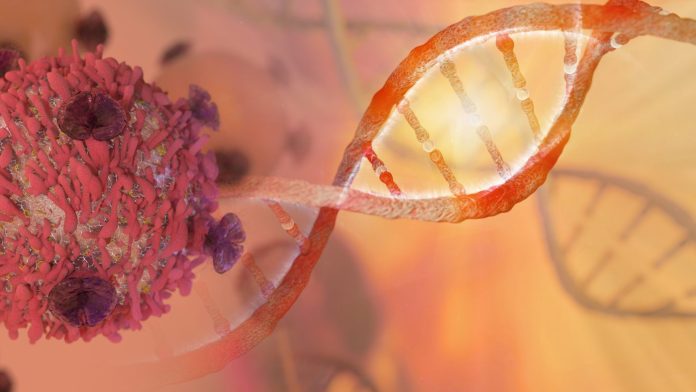
During the process known as chromothripsis, pieces of chromosomes split apart and regroup imperfectly with bits from others. These abnormal chromosomal rearrangements can drive genomic evolution in cancer, particularly in bone, brain, and fatty tissue cancers, by the production of gene mutations. In a paper published in Nature, researchers from the University of California San Diego (UCSD) reveal how the breakaway pieces re-assemble and a potential to develop new therapeutics based on this knowledge.
“Chromothriptically rearranged chromosomes are found in the majority of human cancers,” the authors wrote. It turns out that the broken bits do not actually float freely. Instead, the smaller shattered DNA fragments are tethered together. During mitosis, they travel loosely together into one of the new offspring daughter cells, eventually reforming into an entirely new arrangement.
When chromosomes break and rearrange themselves like this, cancer can result from a variety of ways including loss of tumor suppressors, amplification of oncogenes, and formation of oncogenic fusion proteins. Chromothripsis can also drive the formation and evolution of circular extrachromosomal DNA, a major avenue for oncogene amplification. During chromothripsis, many such changes occur simultaneously, rather than gradually, thus accelerating cancer development or its resistance to therapy.
In the new paper, the UCSD team discovered that the chromosomal pieces are tethered together in mitosis by a protein complex consisting of mediator of DNA damage checkpoint 1 (MDC1), DNA topoisomerase II-binding protein 1 (TOPBP1) and cellular inhibitor of PP2A (CIP2A), thereby enabling en masse segregation to the same daughter cell. Further, when the researchers analyzed genomes from a wide range of tumors, they found that the expression of CIP2A and TOPBP1 was high in cancers with genomic rearrangements.
Once the researchers identified an early step in this process—the tethering of shattered DNA fragments—they wondered if they could stop it by interfering with some components of the newly identified protein complex. By destroying the tether, they hoped to prevent the rearranged chromosomes from forming, thereby reducing the number of cells potentially carrying cancerous mutations.
The team engineered a modified version of one of the tether proteins, cellular inhibitor of PP2A (CIP2A), designed to induce its destruction on demand and found the approach was successful. The tether disintegrated, the DNA fragments did not cluster, and the resulting cells showed reduced survival.
Now that the researchers know the components involved in chromothripsis, particularly cellular inhibitor of PP2A (CIP2A), they believe they may be useful as new drug targets from chromosomally unstable tumors.
“Because CIP2A is not essential to dividing cells and its expression is low in most normal human tissues but high in many cancers, we propose that it is an attractive therapeutic target for chromosomally unstable tumors,” the authors wrote.













